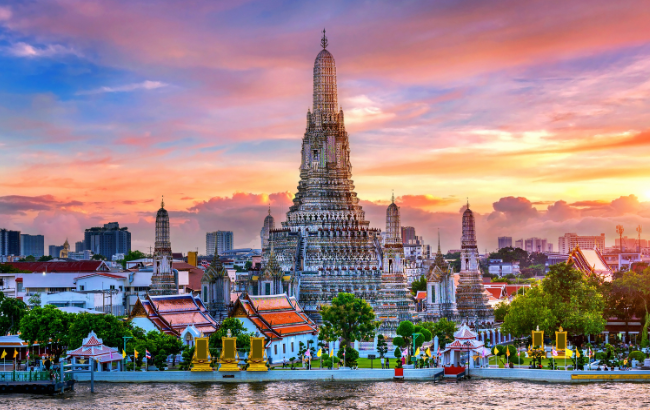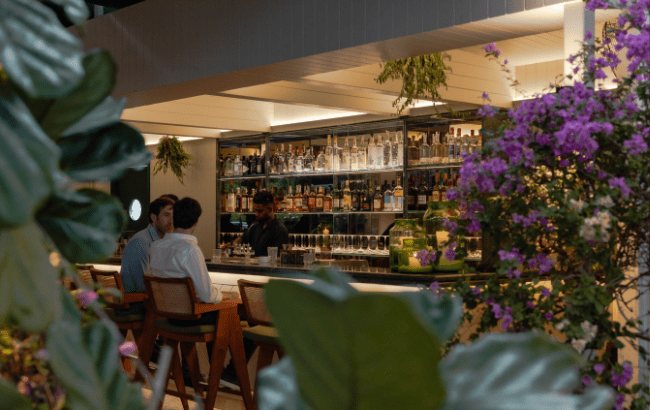Global Bar Report 2024: Asia
Driven by a growing base of drinkers, the bar industry in Asia is shaping the global cocktail conversation, while championing local flavours and identity

In the years since Asia’s hospitality industry returned with post‐pandemic vengeance, the continent’s longstanding cocktail capitals such as Singapore and Hong Kong have further solidified themselves as hubs for drinks innovation. Meanwhile, emergent markets – from Jakarta in Indonesia to Chengdu in China – have become hotspots for dynamic and ambitious establishments keen to localise global trends. More than ever before, the world is taking notice.
Travelling beverage consultant Nico de Soto, who is behind Danico in Paris and Mace in New York, cites Bangkok in Thailand, Seoul in South Korea, Tokyo in Japan, Kuala Lumpur in Malaysia, and Taipei in Taiwan among the continent’s leading markets, with Vietnam’s Ho Chi Minh city on the cusp. “They’re driving new technique trends, like savoury, carbonated and clarified drinks,” he says.
The explosive growth of cocktails in Asia is the result of new purchasing power: a 2020 report predicted that the region’s middle class would grow from two billion people to 3.5bn by 2030.
Alongside fashion, art and dining, alcohol is becoming more widely understood throughout the continent. Much of that growth is taking place in fast‐developing Southeast Asia, home to more than half of the world’s millennials.
“The bar industry in Southeast Asia particularly is on a strong upward trajectory, with more great bars and talented bartenders emerging,” says Serhan Kusaksizoglu, corporate director of bars & concepts for Kempinski Hotels. “China’s bar industry is experiencing a slight decline due to the financial crisis.”
There has also been a rise in demand for premiumisation. Take, for example, the boom of single malt in South Korea – the world’s largest luxury market per capita. Mike Cheong, head of advocacy for Southeast Asia at Bacardi‐Martini, also points to the growth of premium Tequila, citing Patrón’s launch of its El Cielo expression amid Singapore’s F1 Grand Prix this year.
One cocktail megatrend in Asia is the focus on regional flavours – from local spirits to indigenous ingredients. At Hong Kong’s Kinsman that means a spotlight on Cantonese spirits such as baijiu and Yuk Bing Siu (a liquor made from steamed rice).
At Singapore’s Nutmeg & Clove, meanwhile, it means cocktails made with native produce like pandan and durian.
“By using local ingredients in our cocktails, we’re creating a sense of belonging and connection,” says Shelley Tai, group operations director for the Nutmeg Collective, which operates several bars in Singapore. “This allows us to celebrate our culture and share it with the world.”
Despite many of Asia’s cocktail markets being relatively young, the region has one secret weapon: its iconic food culture. Many bartenders take inspiration from local dishes and cooking techniques. The most‐ordered drink at Hong Kong’s highly decorated Coa infuses a Bloody Mary with the flavours of the area’s noodle soup.
“I see a lot of fermentation on menus,” says Nick Lappen, who oversees Jing Bar at Temple House in Chengdu. “Asia has so many cultures with their own traditional fermented food and beverages; it is great to see traditional preparations highlighted in modern bar settings.”
History and storytelling
While cocktail culture may be relatively new in Asia, these traditions convey a sense of history and storytelling. At the InterContinental Danang Sun Peninsula in Vietnam, the bar spotlights the legacies of Vietnamese royal families through its Dynasty Collection of cocktails.
At the Capella Bangkok’s Stella Bar, a new Journey of Old Siam menu takes guests through the city’s neighbourhoods through drinks. “In Thailand, we possess a wealth of heritage in both history and culture, and we are eager to share this richness with guests,” says Khun Rotsukhon Sueaklin, food‐and‐beverage manager at Capella Bangkok.
Looking towards the future, Asia’s bar scene is focused on education – not only for consumers but also bartenders. Phil Nguyen, beverage manager at Ho Chi Minh City’s swanky restaurant‐lounge Bambino, and a veteran of Vietnam’s cocktail competition circuit, says he and other early bartenders have become mentors, hosting classes and workshops to support the nascent scene.
“We’re still a very young scene here,” Nguyen explains. “Hosting events and workshops that bring bartenders to share knowledge is one way we can all improve.”
Significant steps
Sustainability has also emerged as a core value, with the effects of climate change making an impact across Asia. In Singapore, Bombay Sapphire collaborates with bars to upcycle used bottles into glassware and other items. “From an advocacy standpoint, these are small but significant steps we can take to build momentum,” says Cheong.
While economic shifts present short‐term challenges in some markets, Asia’s cocktail scene remains resilient, and largely on the rise. With consumers more curious about food and drink than ever before, bartenders see an opportunity to redefine the bar experience. Lappen captures this vision well: “Cocktail bars offer a luxury, not a necessity. For the industry to thrive, we need to create an experience worth investing in – something people feel good about spending on. When we do, we all benefit.”
Bars to watch in 2025
F*nkytown, Bangkok, Thailand

Southeast Asia’s most prominent cocktail hub after Singapore, Bangkok continues to flourish with new and unique concepts. Among the most exciting of the past year is bartender Pae Ketumarn’s fermentation‐driven playground, where local ingredients are transformed into cocktails inspired by iconic Thai dishes. From the liquid som tum to a matcha latte‐inspired rum drink made with leftover bread from the adjoining Sarnies restaurant, F*nkytown strikes a forward‐thinking balance of gastronomy and sustainability.
Tokyo Confidential, Tokyo, Japan

Tokyo’s perfectionist, craft‐centric cocktail culture was once decades ahead of the rest of the continent’s, but in recent years, many of the city’s institutions have felt a little frozen in time. Opened in late 2023, longtime Asia bartender Holly Graham’s freewheeling new venture emphasises a casual atmosphere with an S‐shaped bar, allowing bartenders to stand nearer to guests. On the no‐rules menu, the cheekily named Only Fans pairs Okinawan citrus with shōchū and bubbly.
Ida’s Bar, Singapore

Singapore has no shortage of buttoned‐up mixology establishments, but we’ve got our eye on this lush, photogenic arts district newcomer that also boasts an on‐site floral studio. Created in collaboration with award‐ winning Cat Bite Club bar and head bartender Nikki Lacsamana (formerly of the city‐state’s Manhattan bar), the approachable but thoughtful menu features nine house cocktails and eight classics.
Related news
Disaronno grows in UK on-trade
